Rain on the Outer Coast
The Outer Coast is a roughly 140 miles section of beach stretching from Icy Point to Yakutat. Large sections of the coast are sandy, some hard packed and easy to walk on, others softer and more tiring. In-between those easier sections there are bay crossings, boulder fields, ranging from fist-sized to house-sized, multiple glaciers, and river crossings. This mix made this section very appealing to us, easy yet interesting terrain and we both looked towards it! However, things never turned out as hoped, and the section ended up being harder on us than we expected, possibly due to the duress to get there. Now we cherish the easier times in the Inside Passage :)
We had a lot of rain, not a single fully dry day, nor any warm day. Thankfully it often did not rain the whole day allowing us to dry out between showers but the cloud coverage most of the time blocked all mountain views and reduced our views to at times pretty monotonous beach views. There also seemed to be a pattern of rain starting whenever we were about to camp, which made it harder to enjoy dinner. We resorted to set up the tent temporarily to cook dinner, and then move it again to set it up for the night, as we are in bear country where you are not supposed to cook where you sleep. Our 12th day was particularly miserable, it rained the whole day pretty hard. We hiked in our dry suits (Gore-Tex onesies), but towards the end of the day they started to soak through together with our backpacks, which are supposed to be fully waterproof. Luckily, our sleeping bag and clothing stayed mostly dry, we store them in dry bags inside the backpack dry bag! The next day we managed to get to a forest service cabin by the Italio River, where we were able to dry everything and relax. That night it poured again, and the rain continued well into the following day. When it stopped raining in the afternoon, we decided to stay another night and continue reading our books on our phones, we really needed a break! Rested and full of energy the next day we pushed in a 27 mile day to Yakutat the following day.
Nearly every day followed the same pattern. The day started with a more technical 6-7 miles section, where we would cross a large bay, glacier or boulder field, that would take us until mid afternoon to get around, and then easier beaches where we’d be able to move fast and do quite a bit of distance, often 10 miles in less than 4 hours. Some of those more difficult sections were not particularly scenic, as we didn’t have enough time to venture past the beach or the closest part of the forest. Cape Fairweather had a very long stretch with large boulders on the beach, and once we got tired of boulder hoping we turned to the forest, where bear trails parallel the edge of the forest for miles. It’s easy to recognize them, there is often bear scat and tracks on them! The only time they are hard to follow is around downed trees, where bears have not carved another trail through the forest yet. We crossed La Pérouse Glacier by traversing the moraine. We were lucky, as the glacier ends within 100 yards (100m) of the beach. Every once in a while it surges so the waves crash against its headwall. The day again was gloomy and we couldn’t see very far into the glacier, but it was still spectacular despite the low clouds. We were more lucky in other spots. We got to Lituya Bay right as the sun came out for 2 hours and were able to see the magnificent mountains and glaciers in the background. We could also see the scars of mega tsunami that razed down the side of the mountain I up to 500 meters above the water. Three days later we reached the Grand Plateau Glacier, whose outlet is too dangerous to cross at the beach, and we bushwhacked quarter of a mile up to the glacial lake, and paddle across. A number of icebergs that calfed from the main glacier a few miles away were stuck at the outlet, waiting to melt, and we had to sneak between them to cross the river. We even had some sun, to make it even more impressive.
On this stretch we saw 12 bears in 8 days, all, except for one, very large grizzly bears. Most encounters are pretty nerve-wrecking, especially when they happen close to the time we get ready to camp. Most bears, once they saw us, just ran back into the forest but a few of them came to smell our prints far behind us. The scariest encounter happened next to a whale carcass in a narrow stretch beach blocked off from the forest by a large bluff. When we saw two bears in the distance, we started yelling at them and making ourselves look bigger by waving our poles. The bears noticed us, and instead of running away, like we are used to see, they ran straight towards us. Watching a massive bear run straight towards you is quite a sight! We were relieved when we noticed that the bear in front started veering off and continued running parallel to the beach a good distance away from us. The second bear followed suit, yet at a walking pace that made for a good suspense for a few moments. Phew! The bears probably bluff charged, testing whether we’d behave like prey (running away). Another challenge is finding a camp spot away from bear trails, as often the forest and beach is full of them. Or maybe we are just scared and think of every little trail is a bear trail!
Not all wildlife was scary. We were hoping to see wolves and were lucky one morning to see two in the distance. Wolves are very shy and we mostly saw their prints, often very fresh. When we crossed Dry Bay and the Dangerous River (yes, it is really called like that. Its crossing was fairly easy though, we therefore called it the Not-So-Dangerous River), we had about 50 curious seals watching us. It was so cute to see them come out as far as possible of the water to see us and then sometimes get scared and hide in the water again. On another occasion, a group of sea lions in the ocean noticed us and started barking towards us. There must have been 20 of them, all swimming very close together and sticking their necks as high as they could to check us out in between the waves.
We had initially looked forward to this long stretch of continuous wilderness, where we would be away from civilisation for so long. But the section was so hard, and we ended up missing town comforts much more than we thought. Our main topic of conversation ended up which food we would get when we got into town, or what we would buy if we could teleport ourselves into Whole Foods for a minute! Carrying 17 days of food from Gustavus took its toll on us. Our backs hurt many days and we kept having to give each other massages every night!.
We got into Yakutat 2 days ago. Our first shower and meal felt amazing. But even more, we enjoy being dry and warm, talking to our wonderful b&b hosts and other guests. The suffering on the coast makes us appreciate the simplest things that we often take for granted and enhances our interactions with locals. It also allows us to learn a lot about ourselves and question our motives for doing such a trip, which we do almost every day!
Our next section is even longer, and it will take us more than 2 weeks to get to Cordova. Luckily, we were able to send a small resupply to a lodge by the Tsiu River, 12 days away from Yakutat, so our packs shouldn’t be as heavy.
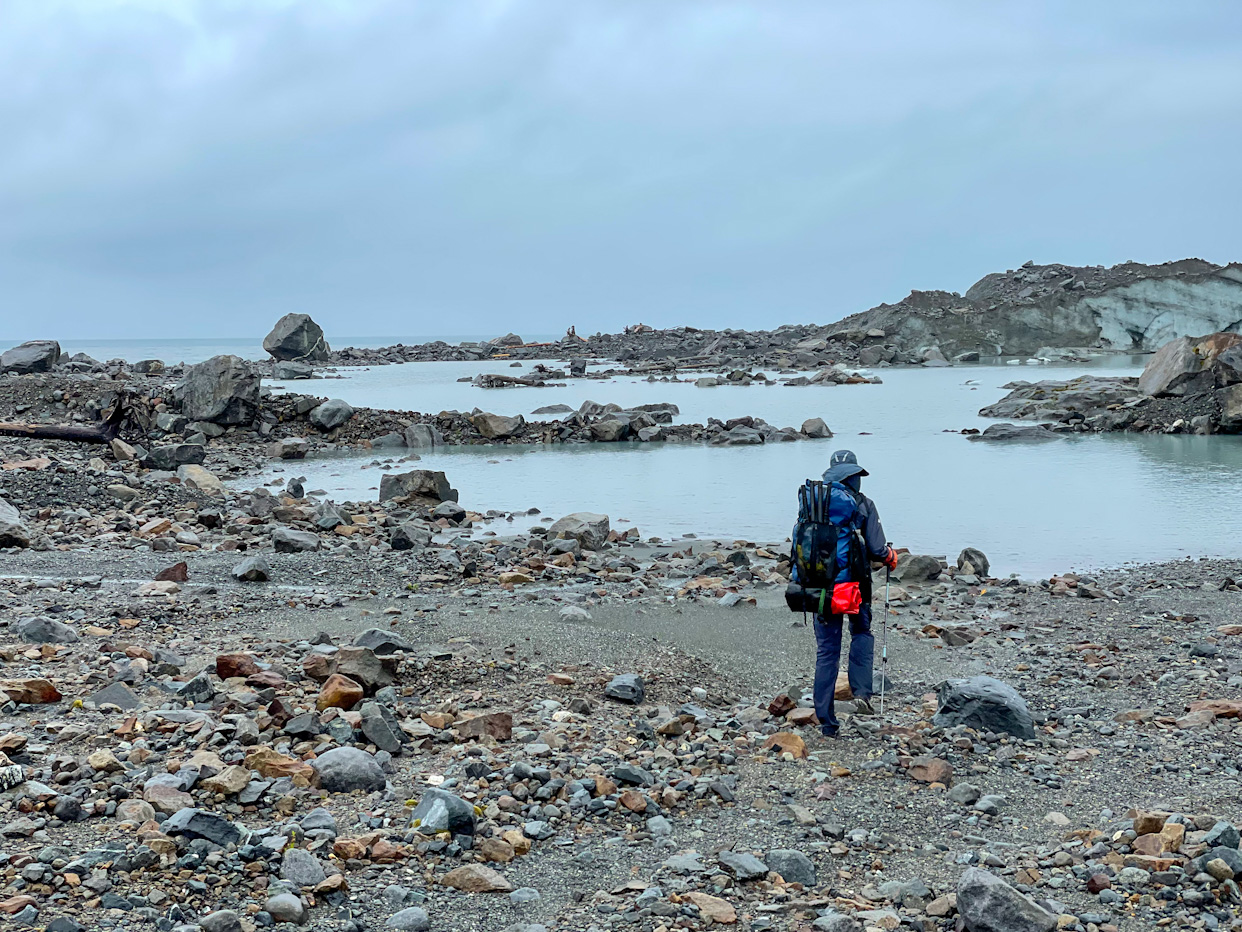
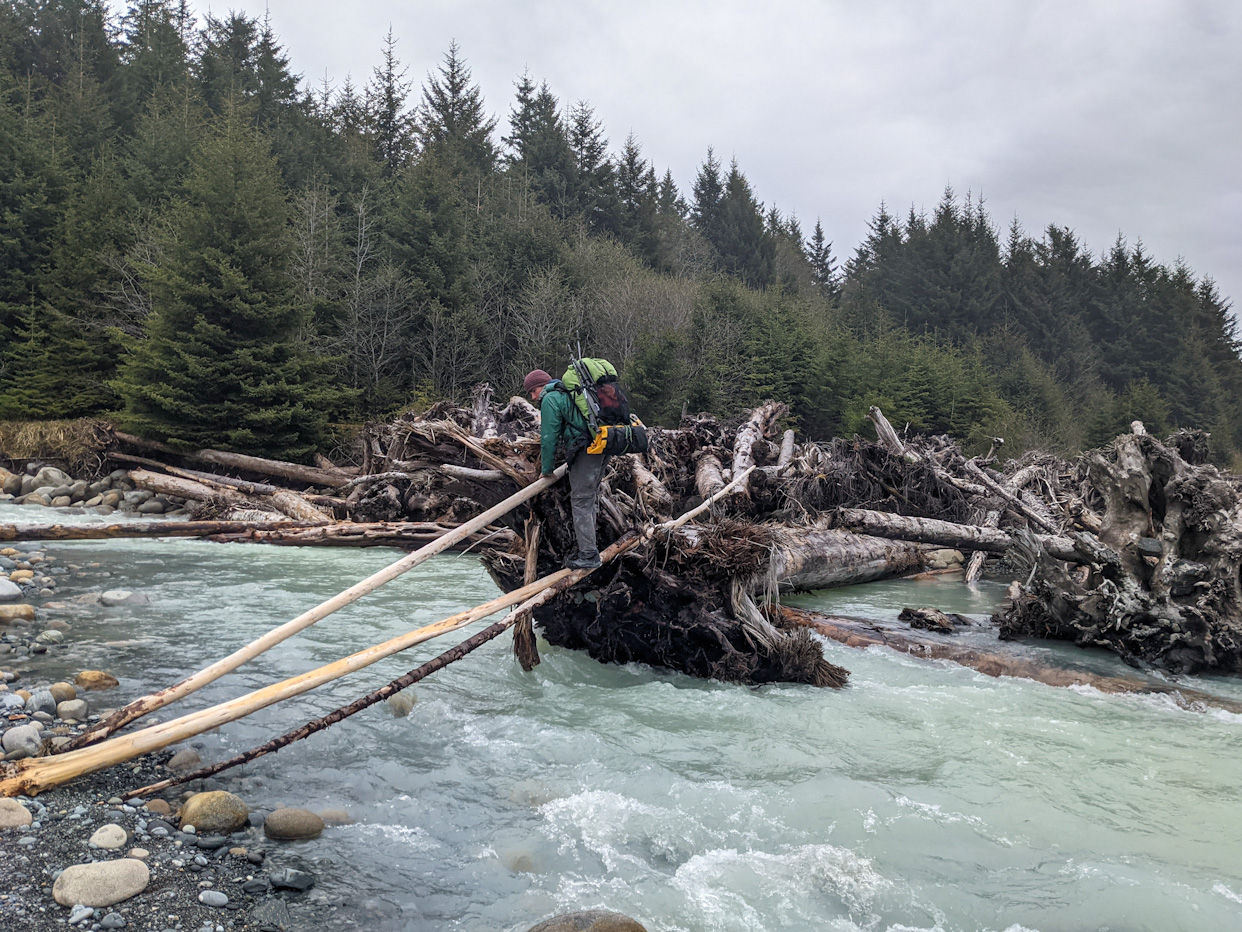
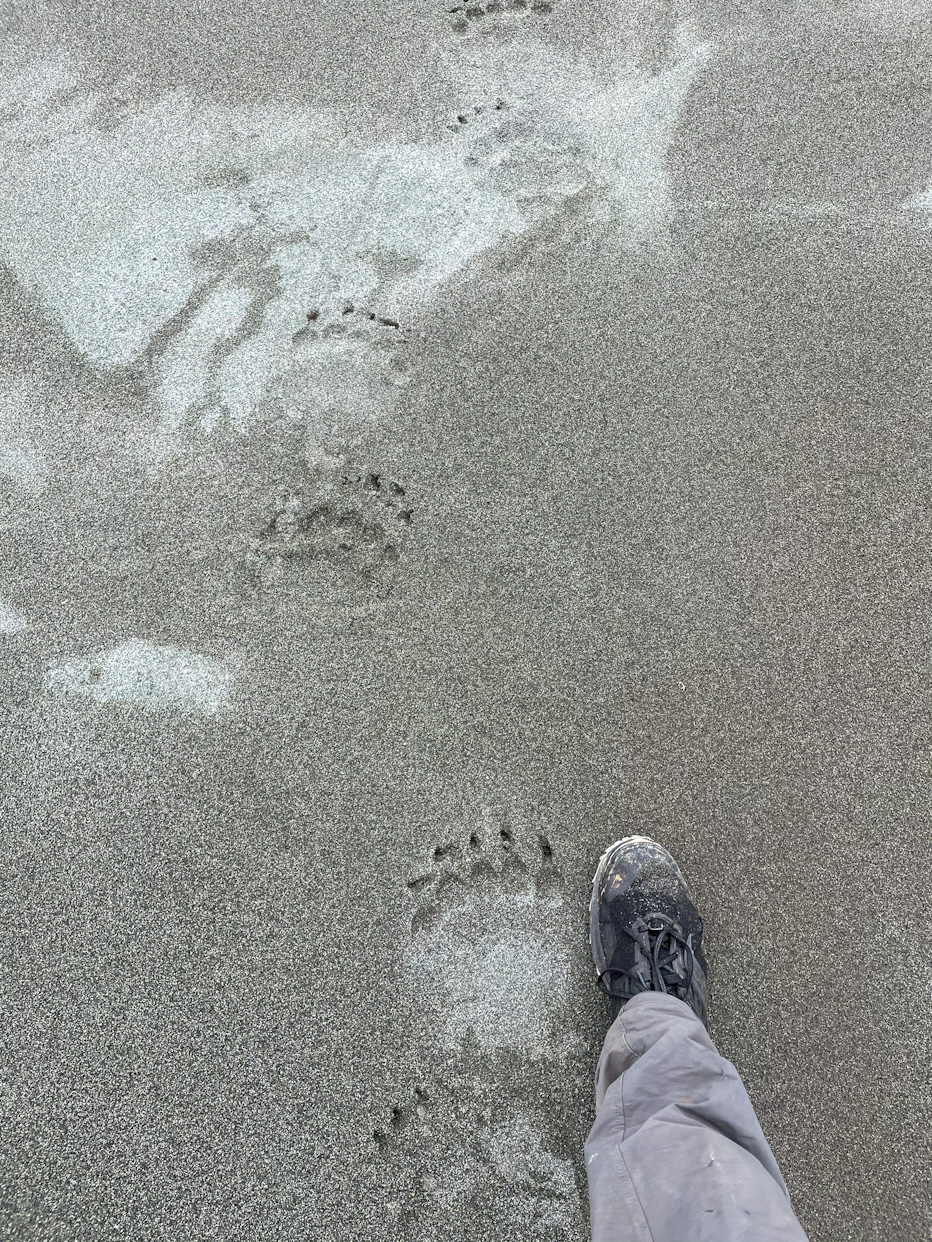
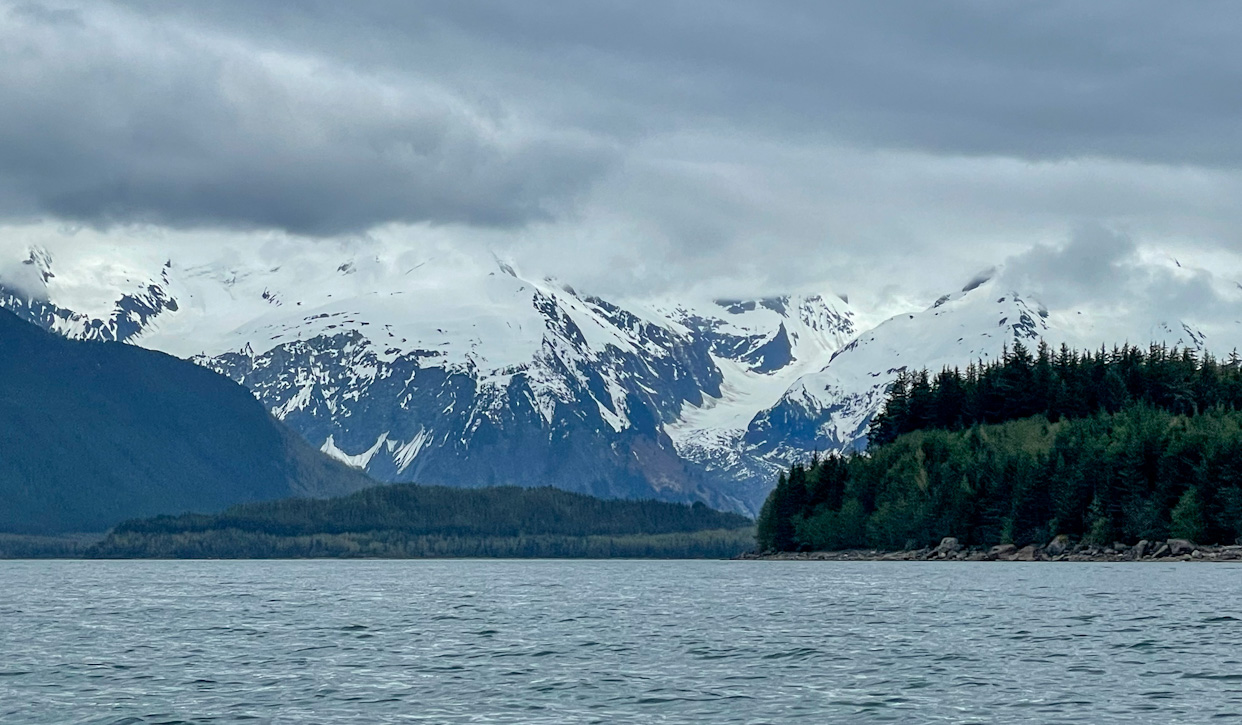

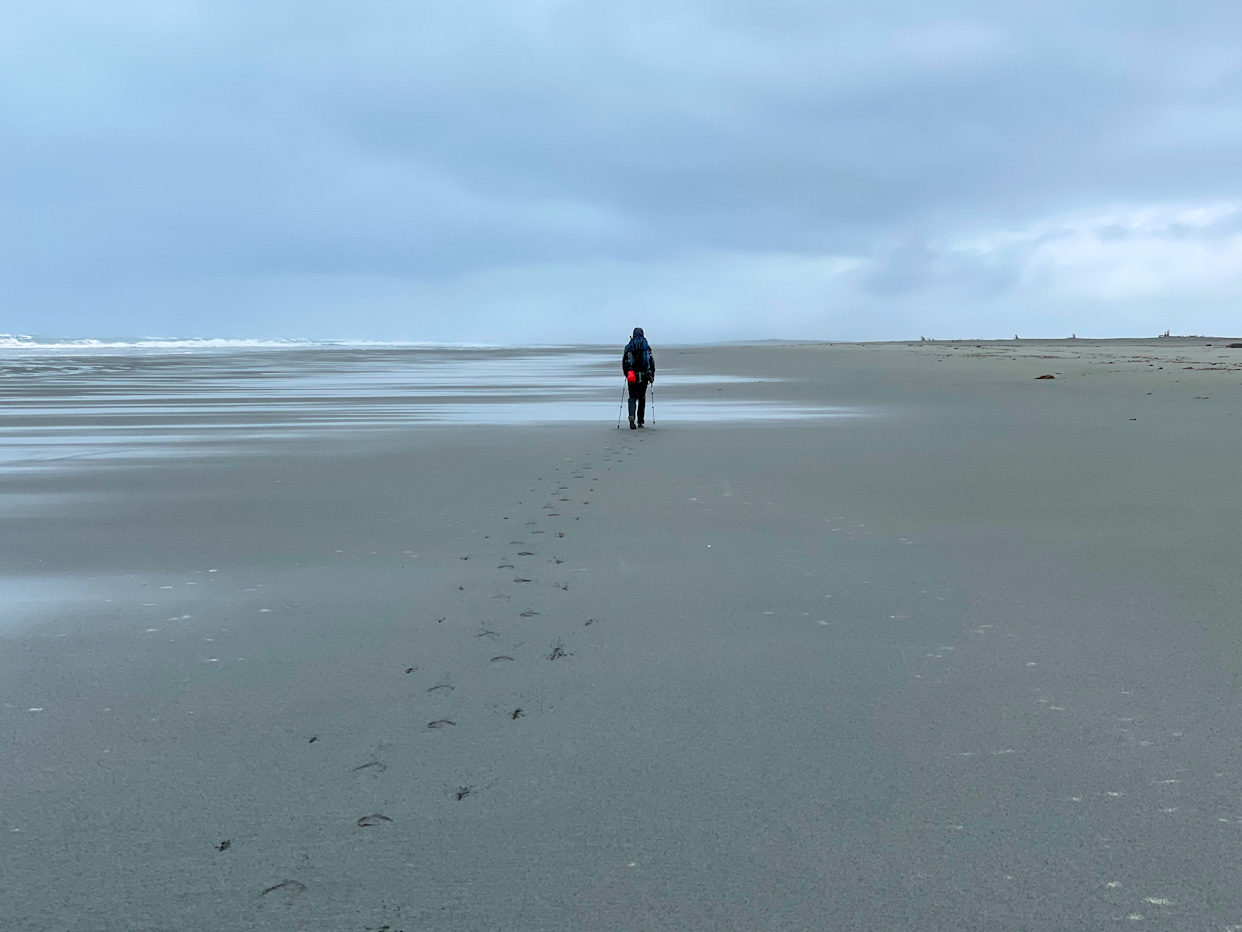
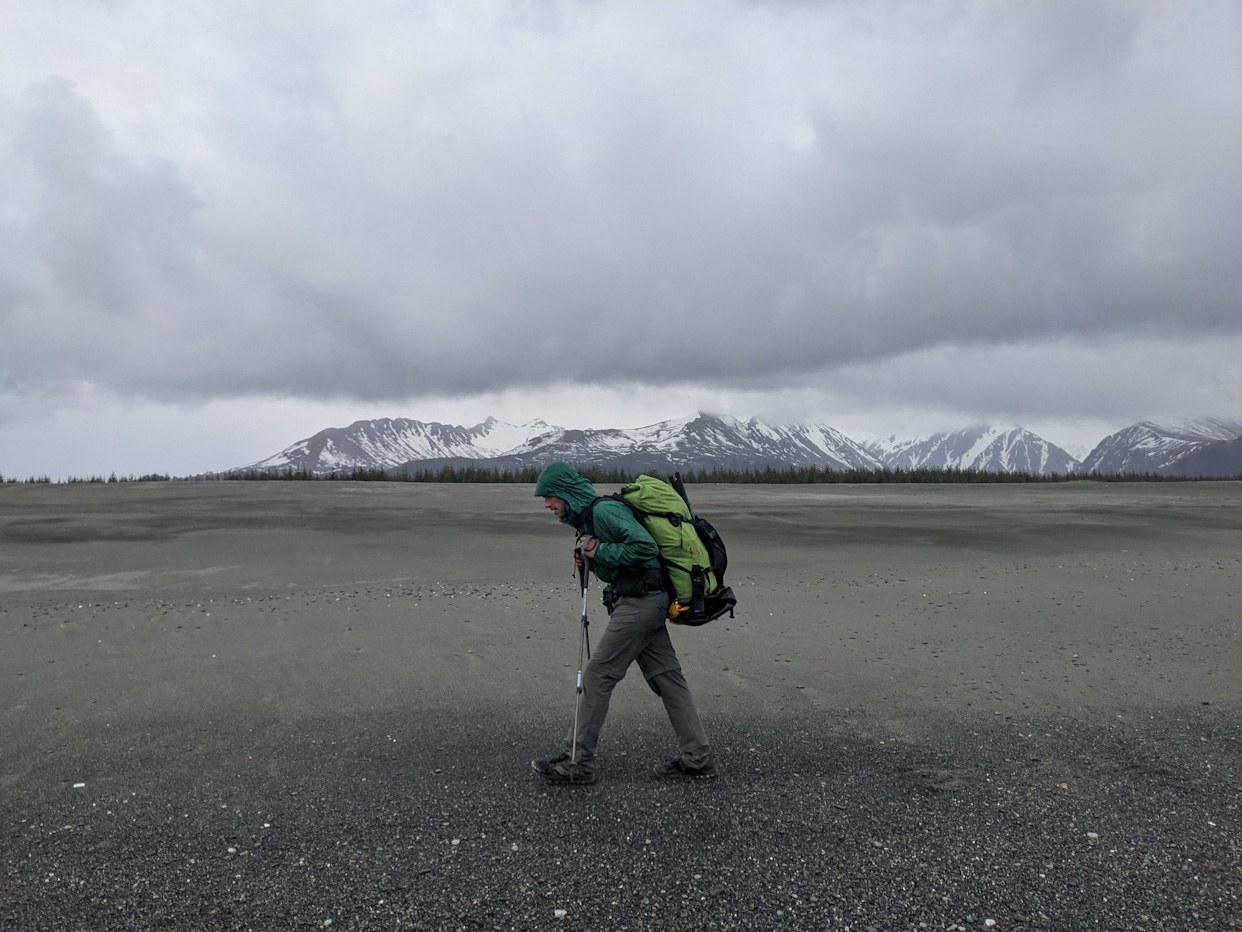
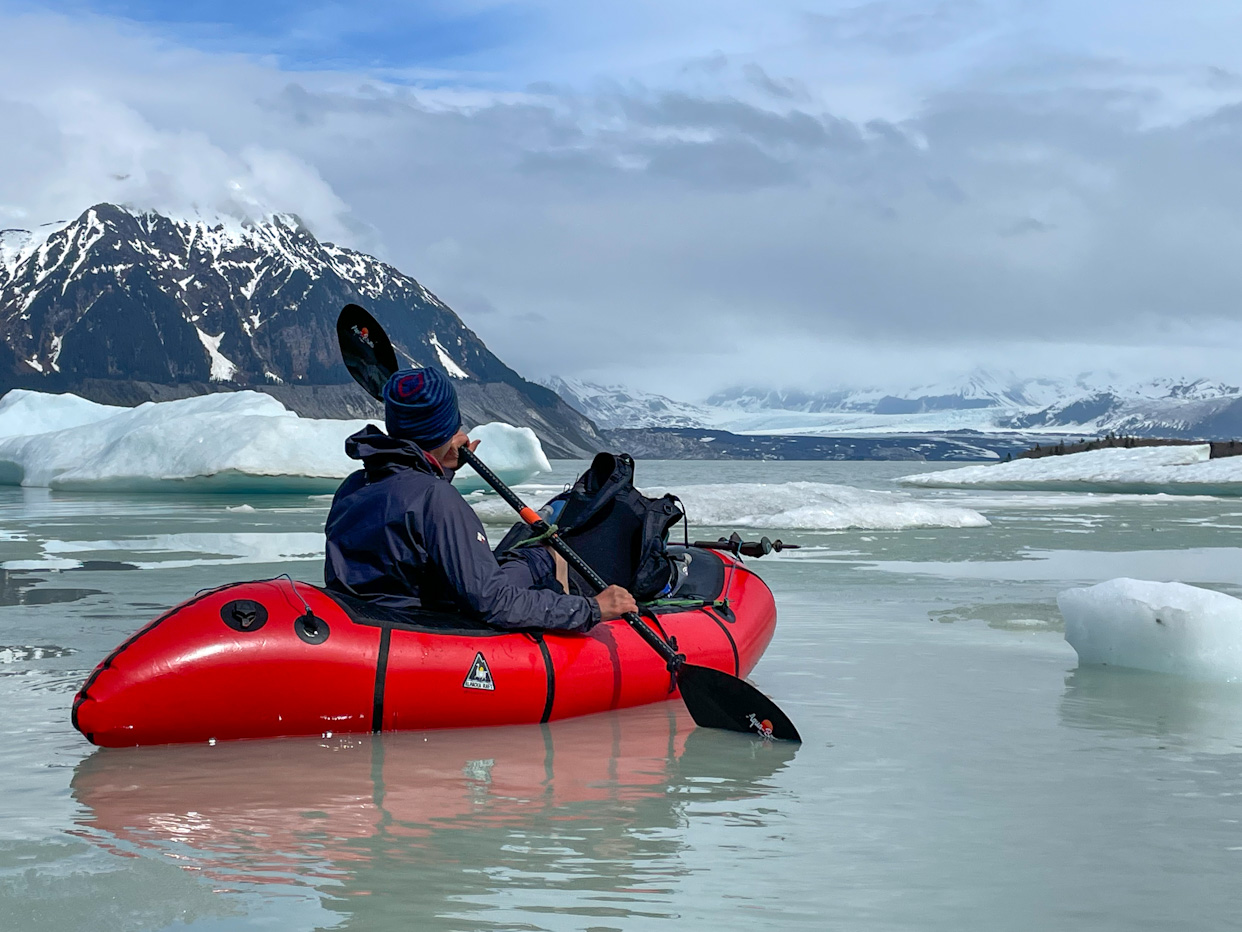
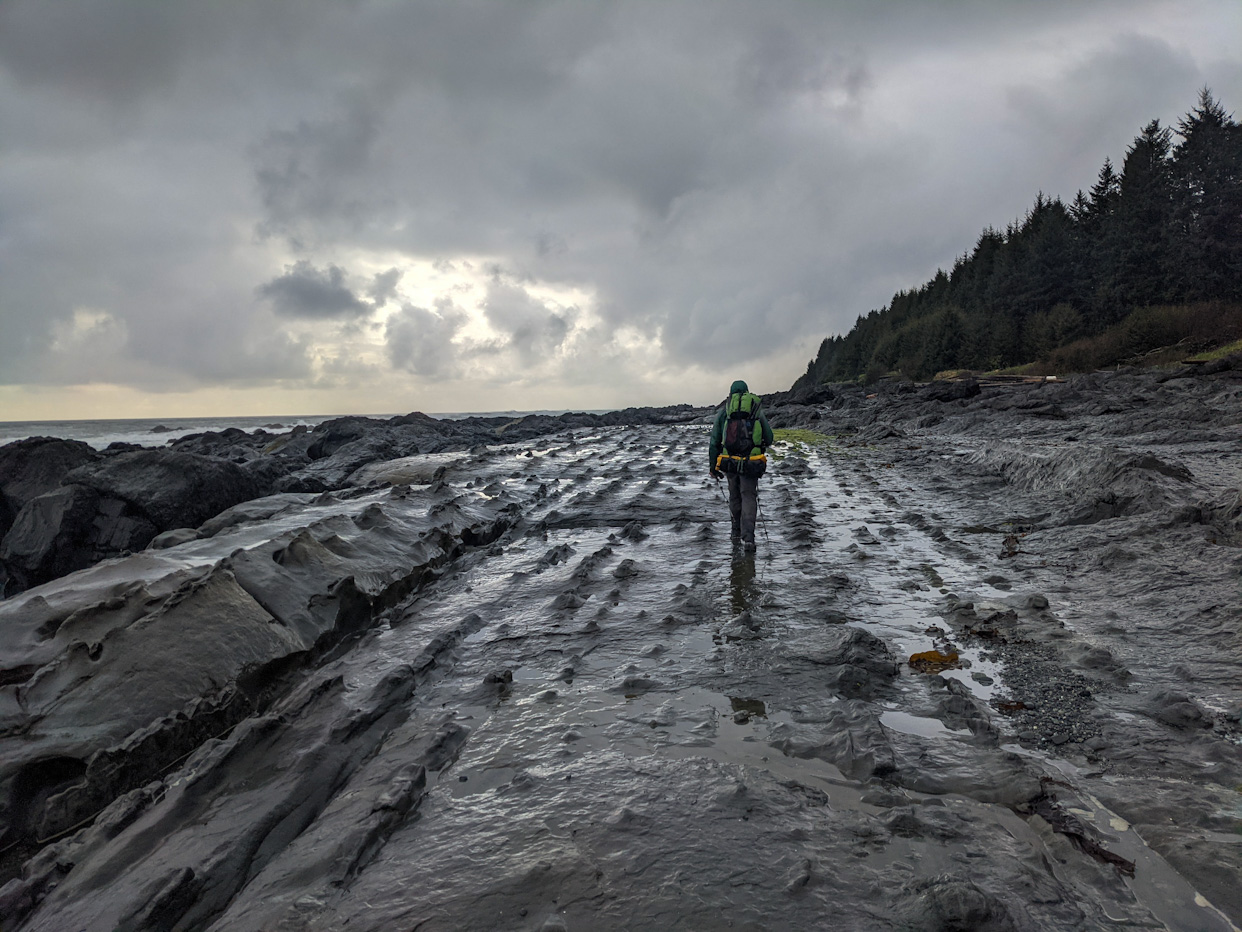

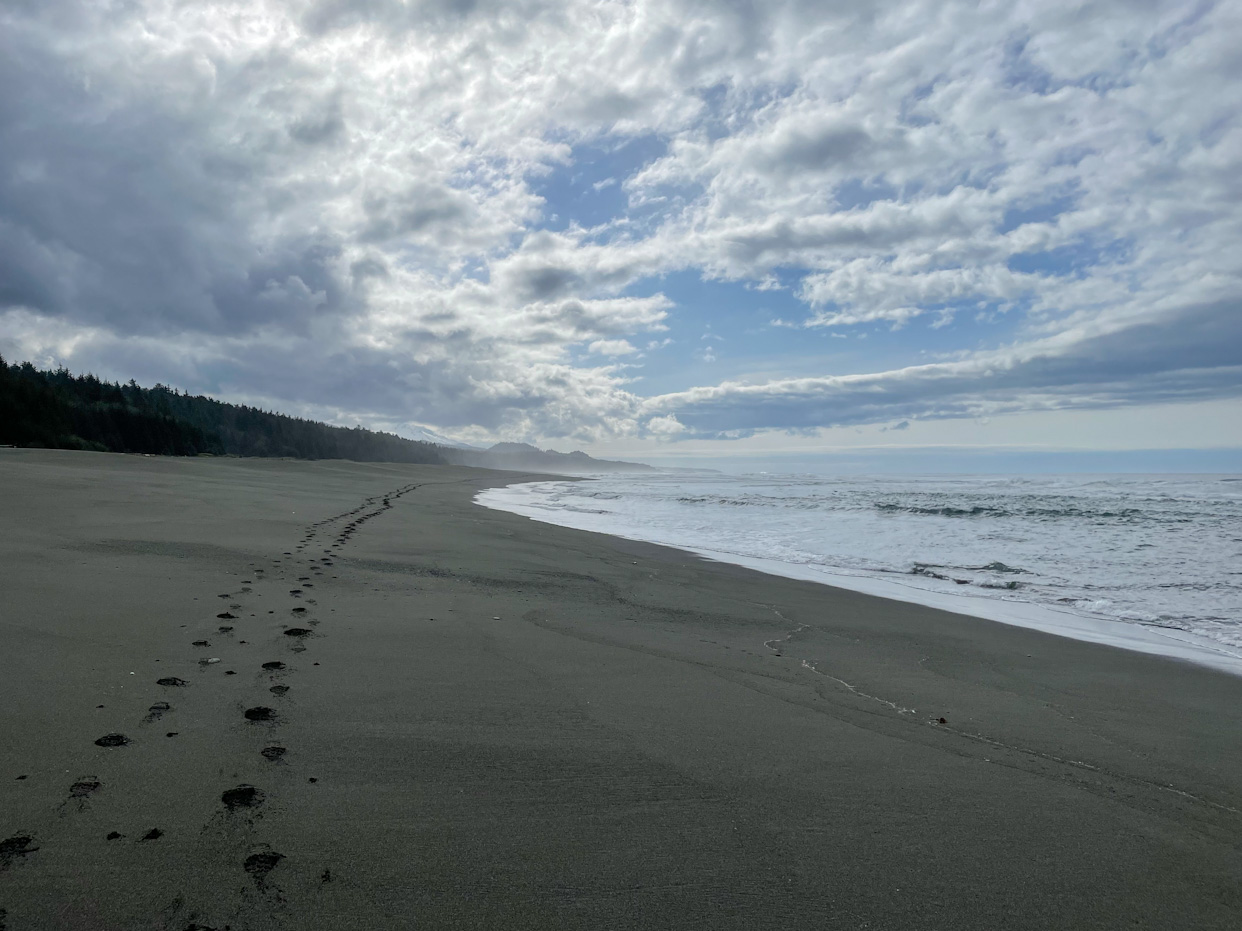
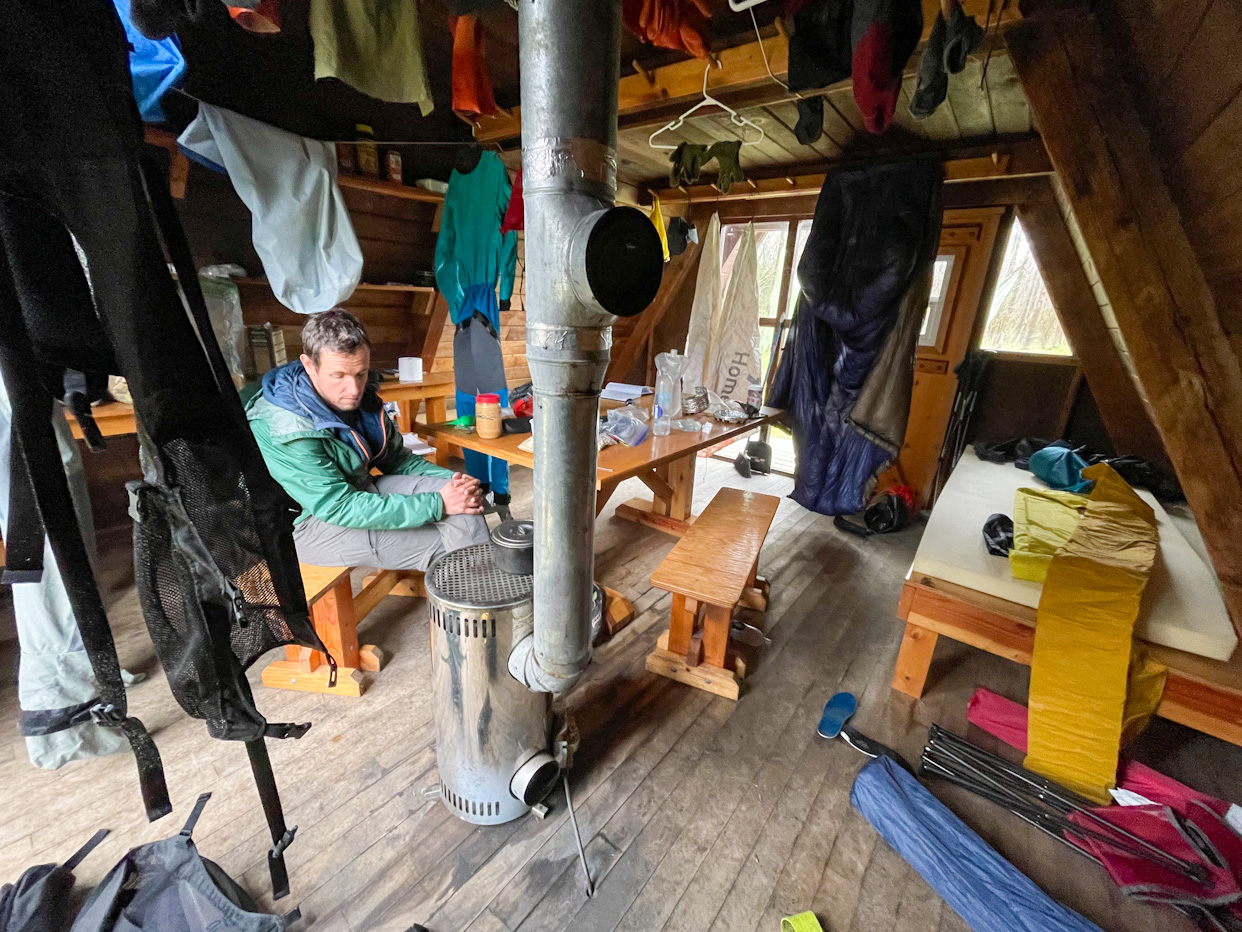

Comments
Marian
Wow, it’s so inspiring to read your trip reports, and the pictures are simply stunning! On those days when you question why you are doing (and enduring :) ) what you’re doing, just remember how amazing and special your trip is - how it’s feeding your adventurous spirits, and giving you an opportunity to see and experience so many wild and wondrous things up close and in person! You both are tough and courageous and inspiring…I’m here cheering you on! Thank you for sharing your adventures… looking forward to the next trip report! :) -Marian
Stacy
Pretty! This has been an incredibly wonderful post. Many thanks for providing this information.